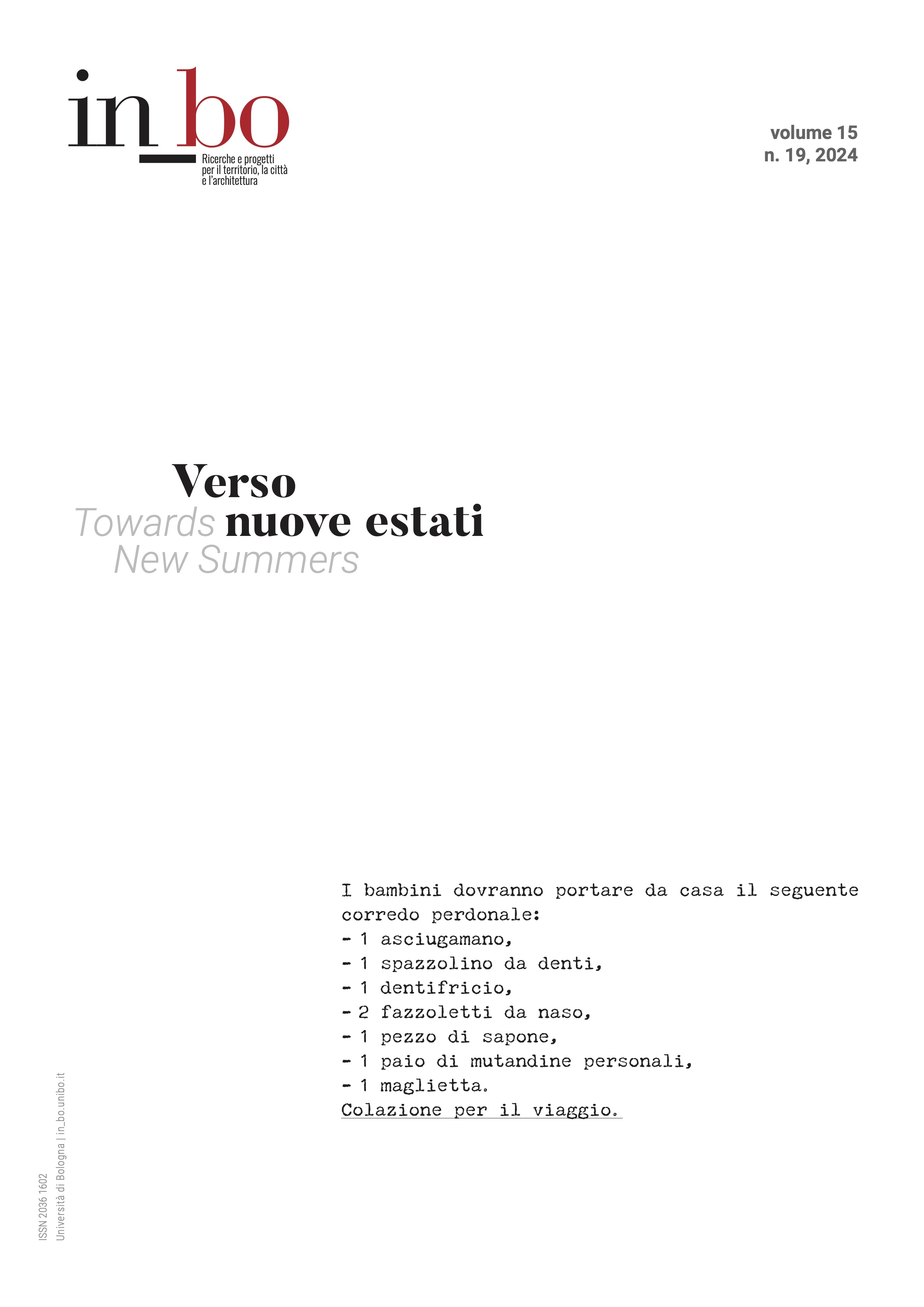The ONMI and the Architecture for Motherhood and Childhood (1925–75): A Forgotten Heritage
DOI:
https://doi.org/10.6092/issn.2036-1602/19715Keywords:
ONMI, architecture of fascism, welfare buildings, holiday camps for children, women's healthAbstract
This paper discusses the role of ONMI in the management, coordination and construction of buildings for the protection of childhood, particularly the colonie (holiday camps) and the “Case della madre e del bambino,” built in Italy during the fascist regime. This article is based on research that is partly still in progress and partly already published. The considerations that arose around the role of commissioning also make it possible to highlight certain aspects related to the concept of rationalist architecture as a representation of the racist health instances of fascist ideologies. These aspects can be made explicit through the search for a correlation between original designs, buildings and functional and symbolic programmes. After the Second World War, most ONMI buildings survived (unlike the Case del Fascio and Case del Balilla), continuing to exercise to some extent the functions for which they were born, albeit with new meanings. These buildings were, in fact, the object of an absolutely necessary re-signification since they had in their genesis an ideological component, in the specific case racist, which was no longer acceptable in the changed historical-political context.
Downloads
Published
How to Cite
Issue
Section
License
Copyright (c) 2024 Massimiliano Savorra

This work is licensed under a Creative Commons Attribution-NonCommercial 4.0 International License.





